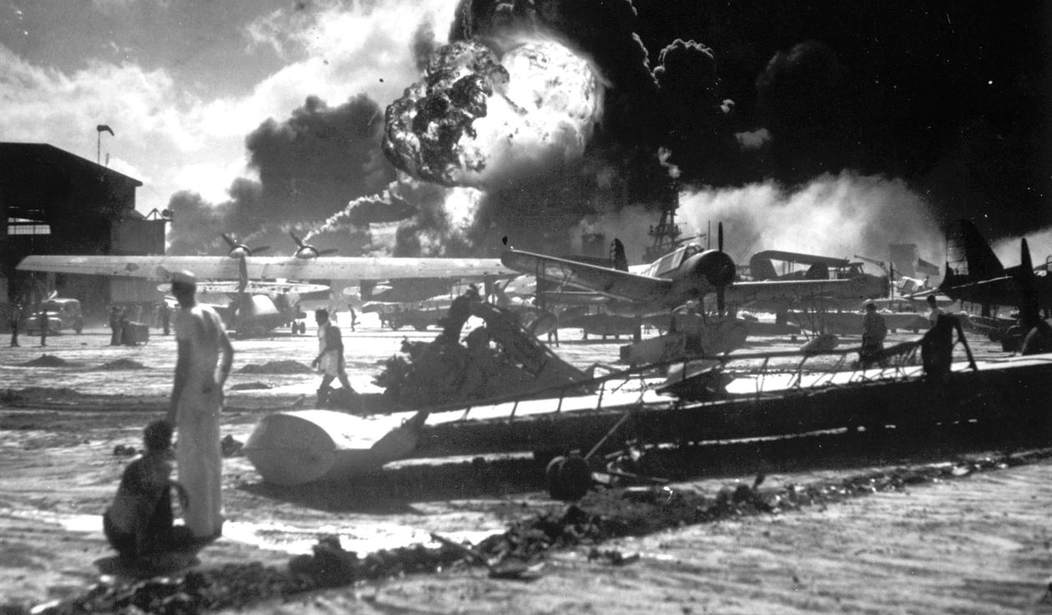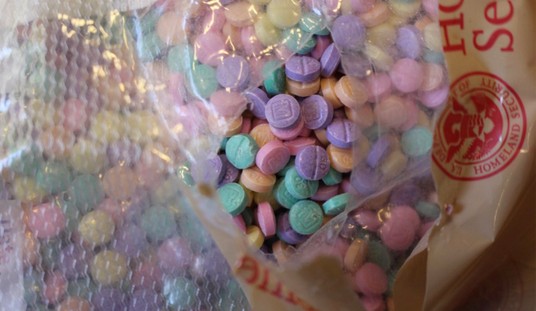At 3:42 a.m. on Dec. 7, 1941, Quartermaster R.C. Uttrick, standing on the deck of a minesweeper called the USS Condor, was scanning the glassy seas roughly two miles from the mouth of Pearl Harbor with his binoculars when he saw what he was sure was a submarine's periscope.
“That’s a periscope, sir, and there aren’t supposed to be any subs in this area," Uttrick reported to the officer in charge.
The USS Condor notified the USS Ward, a WWI-era destroyer recently brought out of mothballs and put back into sentry service outside of Pearl Harbor. Her skipper, Lieutenant William W. Outerbridge, had taken command of the USS Ward days earlier.
The Ward was manned mostly by naval reserve sailors from Minnesota's Twin Cities, Minneapolis, and St. Paul. Lt. Outerbridge was awakened as the ship searched the area. Nothing was found, and Outerbirdge went back to sleep.
Later that morning, another ship reported a periscope sighting to the Ward. Again, nothing was found.
FACT-O-RAMA! Just after midnight on December 7, Japan launched five two-man "midget" submarines from larger subs about seven miles from the mouth of Pearl Harbor. Their mission was to enter the harbor, come to the surface, and launch their torpedoes at American warships. They each carried two torpedoes. Plans were made to pick up the surviving crews, though many considered this a suicide mission. The sailors were given swords and pistols and were not expected to be taken prisoner.
Roughly three hours later, the Ward spotted the conning tower and periscope of a small submarine as it tried to follow a cargo ship, the USS Antares, into Pearl Harbor.
The following is from the actual report of the USS Ward's attack on what would turn out to be the first shots fired — and the first kills — at the Battle of Pearl Harbor, and the first shots between the U.S. and Japan in WWII.
While patrolling Pearl Harbor Entrance on Sunday, December 7, 1941, the U.S.S. Ward attacked an unidentified submarine in the Restricted Area off the Harbor.
The facts are as follows:
At 0637 the Officer-of-the-Deck said, "Captain come on the bridge". A conning tower with periscope of submarine was visible. She was apparently headed for Pearl Harbor trailing the U.S.S. Antares. The Antares was standing toward the channel entrance towing a lighter.
- At 0640 the attack was started. The Ward bore down on the submarine while accelerating from 5 to 25 knots.
- At 0645 the Ward opened fire with No. 1 and 3 guns and began dropping depth charges. One shot was fired from each gun. The shot from No. 1 gun missed, passing directly over the conning tower. The shot from No. 3 gun fired at a range of 560 yards or less struck the submarine at the waterline which was the junction of the hull and coning tower. Damage was seen by several members of the crew. This was a square positive hit. There was no evidence of ricochet. The submarine was seen to heel over to starboard. The projectile was not seen to explode outside the hull of the submarine. There was no splash of any size that might results from an explosion or ricochet.
- Immediately after being hit the submarine appeared to slow and sink. She ran into our depth charge barrage and appeared to be directly over an exploding charge. The depth charges were set for 100 feet.
- The submarine sank in 1200 feet of water and could not be located with supersonic detector. There was a large amount of oil on the surface where the depth charges exploded.
- The attack was made at 0645 which was before Pearl Harbor was bombed by Japanese planes.
- A dispatch by voice transmission was sent to Commandant, Fourteenth Naval District at 0645 which stated:
"We have attacked, fired upon, and dropped depth charges on a submarine operating in defensive sea areas."
- The performance of duty by the officers and men during this attack was in accordance with the traditions of this service.
The young sailors of the Ward had no idea that more than 200 Japanese planes were already in the air and headed for Pearl Harbor.
Reports of the Ward's attack trickled up the chain of command. Some refused to believe that an actual submarine had been sunk. There had been reports of submarines for weeks now that turned out to be nothing. Some of the sailors on the Ward couldn't be sure that the shot from their four-inch gun, fired by "dead reckoning" and not with the use of radar, actually hit the vessel. There had been no explosion. No preparations were made around Pearl Harbor, and the attack became history.
FACT-O-RAMA! Exactly three years later on Dec. 7, 1944, the USS Ward was attacked by kamikaze planes in Leyte Gulf in the Philippines. It was damaged beyond repair and was scuttled by the USS O'Brien which was skippered by Lt. Outerbridge, the former skipper of the USS Ward. You can see the sunken Ward here.
Some of the midget subs found their way into Pearl Harbor.
This photo appears to show what some historians believe to be a midget submarine firing torpedoes at the USS West Virginia and the USS Oklahoma.
The USS Monaghan saw a flag hoisted on the USS Curtiss indicating that a submarine was nearby. A midget sub fired on the Curtiss but missed. The Monaghan rammed the sub and dropped depth charges on it, sending it to the bottom of the harbor. It was brought to the surface late that month and can be seen here.
The USS St. Louis claimed that a midget sub fired two torpedoes at the ship as it made its way out of Pearl Harbor.
One of the subs had a defective gyroscope and never entered Pearl Harbor. It was bombed by a PBY Catalina plane during the day and eventually washed up on shore. One of the sailors survived and became the first Japanese POW in WWII. Japan refused to honor him with the other midget submarine sailors, all of whom were believed to have died. However, one of the subs was scuttled in Pearl Harbor and located intact in 1960. The sub's sailors may have disappeared into the largely Japanese population of Oahu.
After the battle, one of the Japanese subs sent a morse code underwater claiming it had struck a ship. Some Japanese officers believed the ship mentioned was the USS Arizona, though historians find this unlikely.
Four of the five midget subs sank that day. One wouldn't be located until 1951, and another, as mentioned, was located in 1960. Both were in shallow water near the entrance of Pearl Harbor.
In 2002, under-sea researchers found the midget sub that the Ward sunk with a small, four-inch hole in the conning tower. Survivors from the Ward finally got to see the submarine they sank, which kicked off the Battle of Pearl Harbor and America's involvement in WWII.
The crew of the USS Ward, who fired the first shots against the Japanese at Pear Harbor, sinking a midget submarine. Some believed they didn't hit a sub but it was found in 2002. pic.twitter.com/aOBHuUMRQS
— The Kevin Downey, Jr. Show Mon- Fri. 10-11 am! (@KDJRadioShow) December 7, 2023
USS Ward's Gun #3, the second gun to fire on the Japanese but the first gun to hit a Japanese target, survives today and can be seen displayed near the Minnesota Capitol.










Join the conversation as a VIP Member